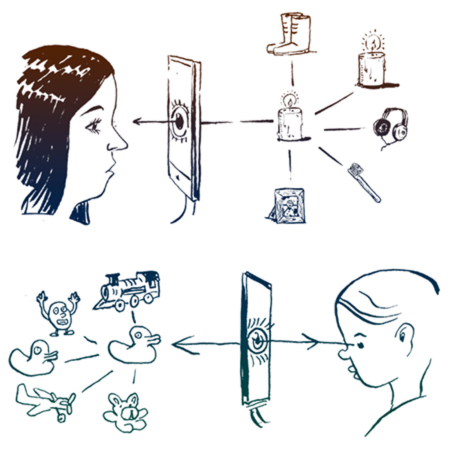ZEITGUIDE TO VIRTUAL REALITY

Is any of the hype surrounding virtual reality grounded in actual reality?
Oculus Rift has been stealing headlines and magazine covers since Facebook purchased the company for $2 billion last year. The VR headset wowed the crowds at the International Consumer and Electronics Show in Las Vegas last month, now it’s working its magic at Sundance, premiering the first Oculus movie – an animated short called “Lost.”
The Rift is supposedly so improved from previous attempts at immersive technology that entertainment companies are getting excited about the possibilities beyond just video games. Variety reports that every major Hollywood studio is “dipping a toe” into VR and that “the new medium could spawn its own version of ‘I Love Lucy,’ which some say accelerated the adoption of television.”
Oscar and Emmy-winning film producer and ZEITGUIDE friend Brian Grazer, is also a believer. “I found I couldn’t live without it after I experienced it,” he told audiences at KCPB’s Leadership Salon event in Los Angeles in December. “When it works well, it gets you to a place of compassion much more quickly, which ignites emotion more quickly, and makes it a more memorable experience.”
“It’s bigger than color,” said Chris Milk, the influential music video director and multimedia artist late last year after giving the Oculus Rift a test run.“It’s bigger than sound. It’s the audience literally inhabiting the narrative.”
Wired magazine, after plastering Oculus Rift founder Palmer Luckey on its cover, declared that his technology would change “gaming, movies, TV, design, medicine, sex, sports, art, travel, social networking, education and reality.”
OK, we get it. Oculus Rift is a big deal already, even if there’s no consumer model yet and hardly enough content to keep anyone interested.
But it’s not the only reality-altering technology out there. Sony’s Project Morpheus is geared towards gaming but some think it could be a major competitor for Rift. Samsung’s Gear VR is already in stores and will soon be keeping first-class passengers entertained on long Qantas flights.
Current projections put the virtual reality market at over $5 billion by 2018.
Meantime, another 1 million “augmented reality” wearables such as Google Glass and Vuzix, which overlay virtual images into your field of vision, are estimated to be available by fall.
Startup Magic Leap hopes to push VR’s edge with a technology it calls “cinematic reality.” What is it exactly? The company hasn’t given out much details, but it claims to be working on a lightweight wearable device that would allow users to see and interact with images it projects, through a headset, into their field of view. Where with VR you are immersed in an entire virtual world, Magic Leap’s technology brings virtual images to the real world. Google was apparently so impressed, it invested $542 million in the company last year.
Microsoft is also jumping into the fray with HoloLens. The wearable technology also allows you to blend the virtual and real world, interacting with and “physically” manipulating digital projections. The technology has been largely lauded so far with leading tech website Venture Beat calling it a “game changer” that could impact industries from appliances to real estate.
That hints at the larger question that’s just surfacing: what impact might such technologies have beyond gaming and entertainment?
Keep learning,
Brad Grossman and Team ZEITGUIDE
